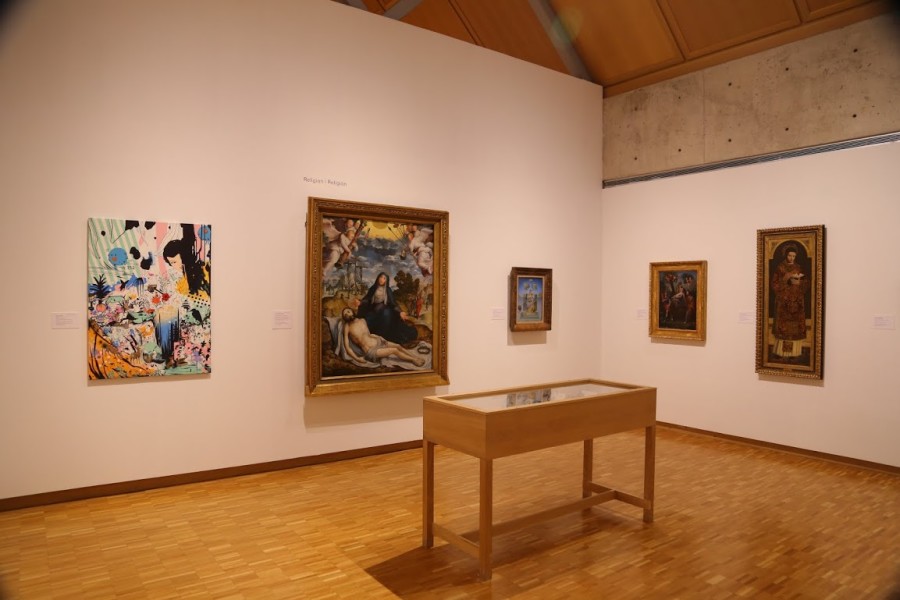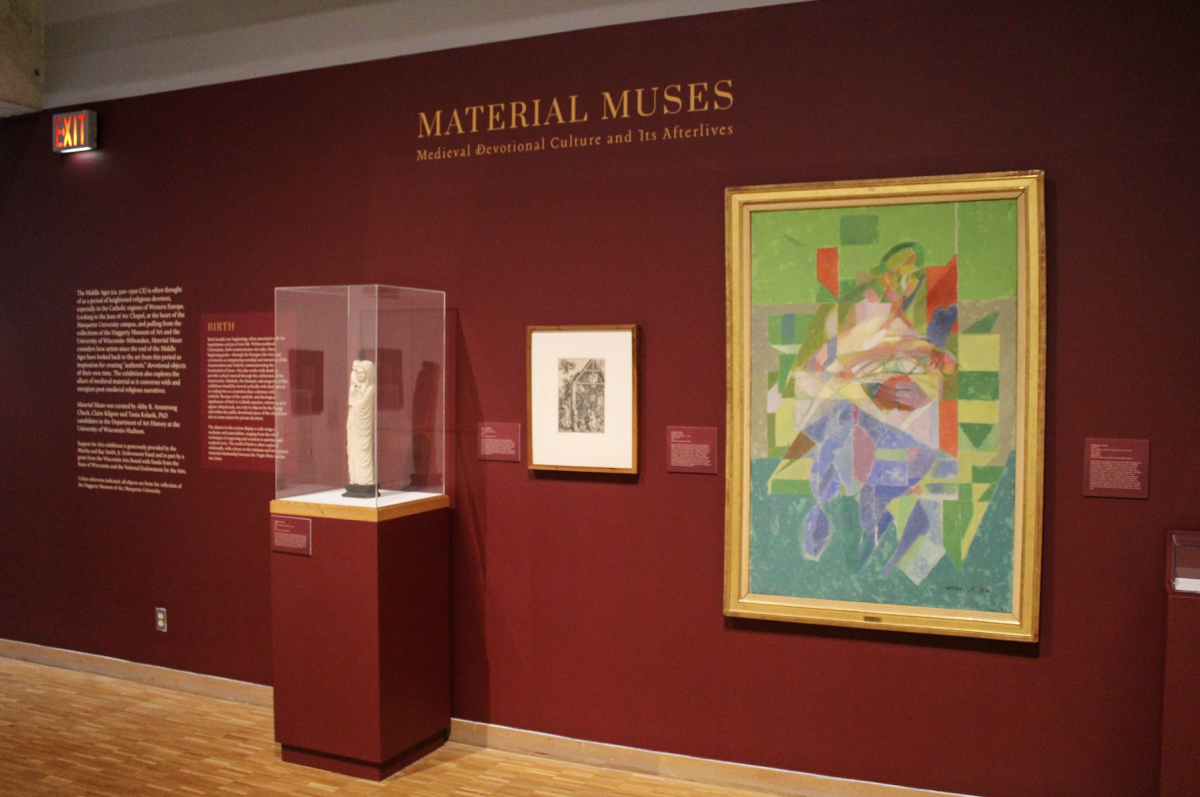“What is Hispanic?,” the Haggerty Art Museum’s new exhibit, takes a look into the Hispanic identity and what it means to the Spanish-speaking world. Each piece reveals personal stories on the artist and will be on display until Dec. 23.
Created by Scott Dale, associate professor of Spanish, the exhibit aims to continue the discussion of the word Hispanic. Dale said his upbringing in Southern California inspired his interest in the subject.
“I lived in an area where all the streets had Spanish names and so I was wondering, “where do I live?” “Why are all the street names and city names in Spanish?” And so that piqued my curiosity. I wanted to know about the land and where I lived and its history and my role. Who am I in this context? It’s a continuation of all these questions I had when I was a 10-year-old.”’
The U.S. census says anyone who is Latino or Hispanic is “a person of Cuban, Mexican, Puerto Rican, South or Central American, or other Spanish culture or origin regardless of race.” It is a foggy definition because the word ‘culture’ is subjective to each person. Determining the limitations of this fluid term is almost impossible, but Dale offered one key feature that relates to the Hispanic identity: the Spanish language.
“I studied and researched (the artist’s) backgrounds, and I wanted to be convinced that the youth of each artist was based in a Spanish-speaking household,” Dale said. “For me that was very important.” He believes the language is at the core of the Hispanic identity, along with an access to values and cultural identity.
The exhibit is divided into eight sections: Dolor (pain), Comunidad (community), Carácter (character), Identidad (Identity), Trabajo (work), Humilidad (humility) and Reinvención (reinvention). Each part highlights a general theme in the artist’s work. Many prominent works from people such as Salvador Dali, Pablo Picasso and Diego Rivera make up the exhibit. The paintings span across decades and even centuries, with some from the second half of the 1500s to others painted as recently as 2012.
Noelia Farias’ painting “A La Espera” (Waiting) presents an eerie background with a small girl painted in dark blue and yellow kneeling beside a black humanoid mass. Someone might ask what is she doing there? How are the two figures related to each other? For Dale, the piece of art poses a question without suggesting an answer.
The exhibit also includes a space between the paintings to engage the audience. A small table with pencils and sticky notes invites viewers to answer the question, “What is Hispanic?” and stick their answer to the wall.
The exhibit is a chance to showcase unique pieces of art that portray the diverse expressions of Hispanic identity. Dale urges people to come ready for full examination of the elusive word “Hispanic,” as well as with an open mind to think about the question, “What is Hispanic?”





Don Basch • Oct 29, 2015 at 10:24 am
THOMAS SOUTHALL…
I’m setting up appointments for an associate who’ll be visiting your community some time in early November. He’s a retired school teacher (grade school, high school & college), & I’d like to coordinate his planned trip there with other related activities, hence this correspondence. If you/your paper would like an interview with Dennis, please let me know. I’ve copied & pasted below a communication I just sent to a Fox News reporter & anchor in Washington, DC. It will, hopefully, explain why I’ve written you.
Thank you for you time & consideration,
Don Basch
Lake Geneva, Wisconsin
http://www.theeyesofthecomet.net
Once upon a time in Indianapolis you were gracious enough to send out a series of tweets & information regarding an associate, Tyrone Young, & his film, Filling the Gap, a documentary Ty had crafted to help young people of color feel better about their ancestry, themselves & the color of their skin.
Both you & the film did very nicely — you moved on to the Windy City, & the movie was seen by kids from coast to coast & also picked up an NAACP Image Award nomination along the way.
Today I’m writing you about a book that was just released, & I normally put on the subject line in my correspondence: This book should become the flagship manuscript for antebellum slavery. It’s being advertised by fine book stores & websites around the world, & I noticed Amazon has a five star review from a reader already.
A few minutes ago I Googled:
Dennis Hague, The Eyes of the Comet, an American Slave Odyssey
Five pages of results came up with new countries & booksellers added today. Dennis & I are also fine tuning our website, http://www.theeyesofthecomet.net … however, it’s up & running & offers quite a bit of information.
At your convenience, please advise me if you are interested in an interview with Dennis, &, if yes, we’ll proceed as per your recommendations.
My thanks — warmest personal regards to you & best wishes for continued success(es)… enjoy beautiful & exciting Washington, DC,
Don Basch
Lake Geneva, Wisconsin
http://www.theeyesofthecomet.net
Sorry to be so gabby, but I want to include the following…
Years ago a friend from my childhood, Bill Blinn, put Alex Haley’s Roots on television as a mini-series. It was, quite simply, fine, informative & powerful entertainment. EYES, a 570-some page manuscript, has that same potential.